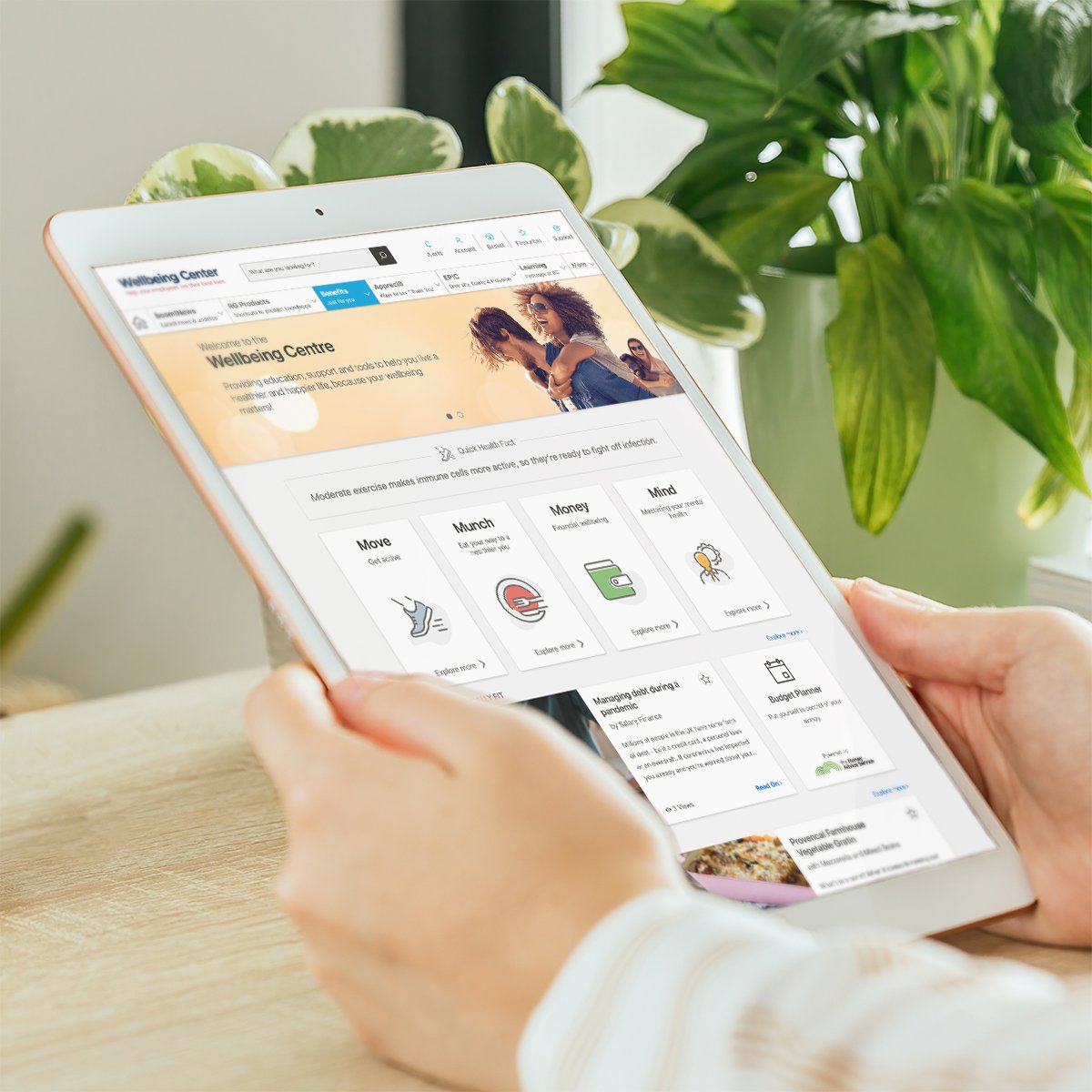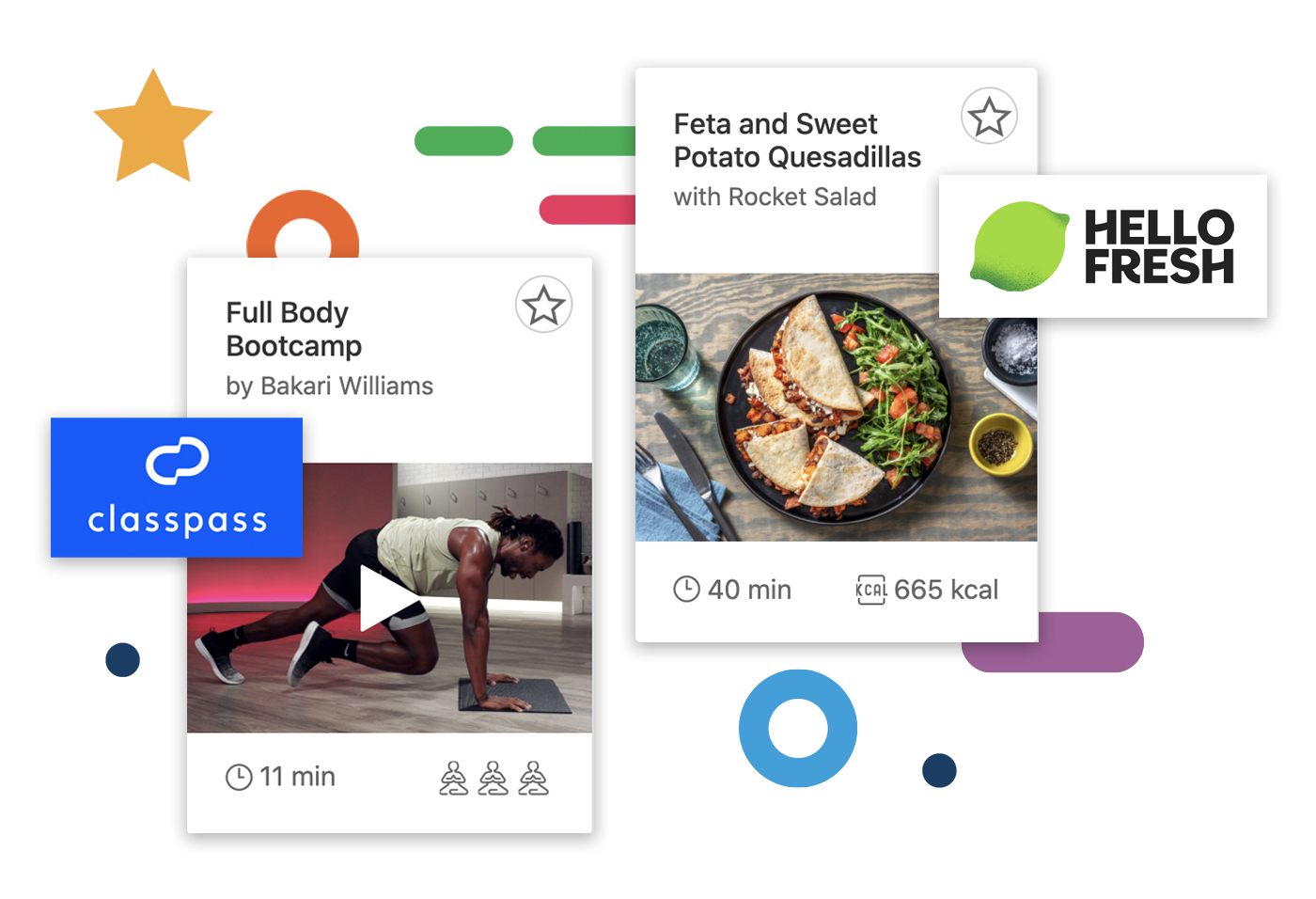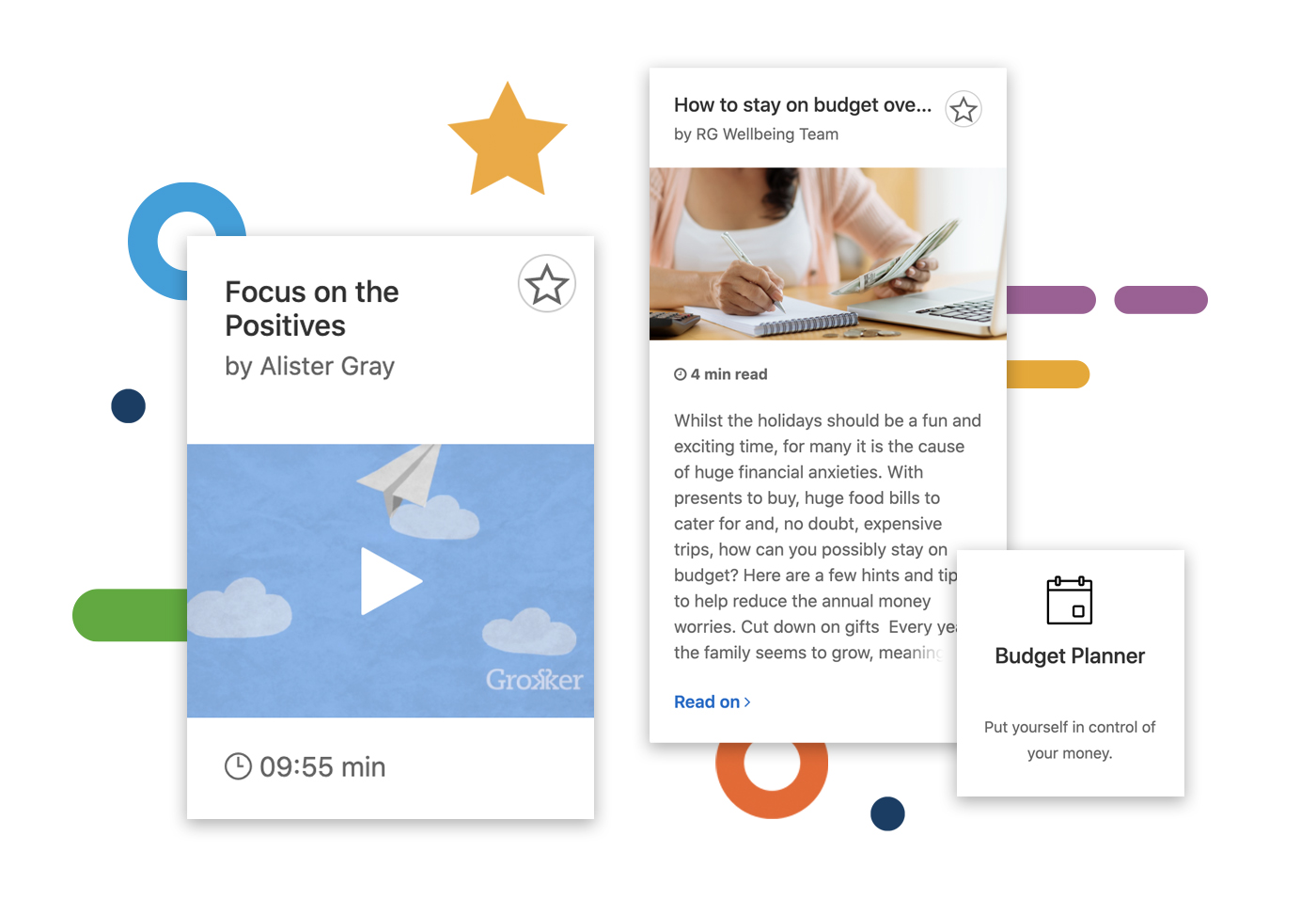Employee Wellbeing
Wellbeing content to support your people, every step of the way
Help employees nurture mind and body with expert content from the Wellbeing Centre. The Wellbeing Centre is filled with hundreds of videos, articles, tips and other resources from wellness experts to support employees in their quest to lead healthier lives in three key pillars: Physical, Mental and Financial. This approach can supplement a wellbeing strategy that lets employees choose the types of content and tools that best fit their goals, interests and lifestyles.

Build a healthy foundation for employee engagement through wellbeing
Offering an employee wellbeing program helps employees feel supported and gives them the tools they need to reach their personal physical, mental and financial wellbeing goals. But it’s not only beneficial for your people, it’s good for your business, too. The right wellbeing program can help:

Offer support where it matters most
Reach all your employees with a wellbeing strategy that’s personal, proactive and inclusive.

Boost your Employee Value Proposition
Deliver wellbeing tools and support to show employees you care and enhance your benefits portfolio.

Delight employees with wellbeing choice
Make wellbeing accessible through on-the-go features and an ever-growing library of expert content.
The four pillars of employee wellbeing
Employees who are healthy and happy typically have higher levels of productivity than those who are not. Discover all four areas of the Wellbeing Centre, accessible anywhere, anytime and on any device.
Move
Hundreds of exercise videos for all abilities and goalsMunch
Nutrition tips and healthy recipesMoney
Impartial expert financial adviceMind
Mindfulness videos to manage stress, sleep and more'Move' and 'Munch' boost employee wellness
Your people will get unlimited access to hundreds of ClassPass fitness videos in our Move section of the Wellbeing Centre, which they can do from the comfort of their own home (or even workplace). Employees will also have access to hundreds of nutritious recipes, articles and how-to videos to learn how to eat better and get delicious recipes to fit any lifestyle.


Turn to 'Money' and 'Mind' to manage finances and everyday stress
Employees can turn to our Mind tools and videos through the Wellbeing Centre to keep anxiety and stress levels in check. Plus, lots of guided meditations can help your people relax at the end of the day or improve their quality of sleep. The Money section helps employees gain the knowledge and confidence they need to manage or avoid financial troubles with valid, unbiased information and actionable advice, helping them feel a sense of financial wellbeing now and in the future.
Featured Report
The Engagement Paradox Report
Ready to discover how to boost Australian employee engagement and happiness? Access our research report to learn more.
![[Report] The Engagement Paradox Report](https://www.rewardgateway.com/hubfs/2024-AU-engagement-paradox-report/2024_The%20Engagement%20Paradox%20Report_AU-HRD_1000%20x%20600.png)
“Having 'The Hive' has really made a difference – it has been quicker and easier for us to reach our teams, and we could communicate a lot of information without our people feeling overloaded with a lot of corporate emails. Pairing this with reward and recognition, and seeing our people use the Wellbeing Centre means our goals to support our people, keep them informed, and share the love are all well on track.”
Discover more Reward Gateway | Edenred client success stories
![[Client Testimonial] Freightways Australia](https://www.rewardgateway.com/hs-fs/hubfs/00-Product-Assets-New/AU/Testimonial-Mockups/freightways-mockup.png?width=2000&height=1526&name=freightways-mockup.png)